Big Ben is the nickname of the great bell inside the clock tower of the Palace of Westminster in London, England. The clock tower, officially called Elizabeth Tower, is one of London’s most iconic landmarks and a symbol of British culture and history. It was built in 1859 as part of the reconstruction of the palace after a fire in 1834. The tower is 315 feet (96 meters) tall and has four clock faces that show the time to the city and the world. Augustus Pugin, a pioneer of the Gothic Revival style of architecture, designed the tower. He was inspired by the medieval Gothic buildings and the Tudor dynasty that ruled England from 1485 to 1603. The tower is richly decorated with carvings, statues, shields, and inscriptions that reflect the history and identity of the United Kingdom. The tower also has a prison room, where members of parliament who broke the rules were detained, and an Ayrton light, a lantern that signals when the parliament is in session. The clock of Big Ben is famous for its accuracy and reliability. It has a pendulum that swings every two seconds and a mechanism that corrects the time by placing coins on the pendulum. The clock has five bells that chime every quarter hour and on the hour. The largest bell, Big Ben, weighs 30,000 pounds (13.7 tonnes) and strikes the hour. The origin of the name Big Ben is unclear, but it may have been named after Sir Benjamin Hall, who oversaw the installation of the bell, or Benjamin Caunt, a heavyweight boxing champion. Big Ben has a significant cultural influence and is often used as a symbol of London, England, or the United Kingdom. It has appeared in many films, books, songs, and artworks that feature London or British themes. Although it is not open to the public, it is also a popular tourist attraction. The tower has witnessed many historical events, such as the coronation of Queen Elizabeth II, the funeral of Winston Churchill, and the celebrations of the new millennium. It has also survived the bombings of World War II and several breakdowns and renovations. Big Ben is a national treasure and a source of pride for the British people.
What is Big Ben?
Big Ben is a famous clock tower located in London, England. It is an iconic symbol of the city and is widely recognized around the world. The tower is officially known as the Elizabeth Tower and is part of the Palace of Westminster. Big Ben was built in 1859, making it 164 years old. The tower’s construction began on September 28, 1843, and was completed on May 31, 1859. It was designed by architects Augustus Pugin and Charles Barry, who collaborated on the neo-gothic design of the Palace of Westminster. The height of Big Ben is 316 feet (96 meters). The tower has a square base measuring 40 feet (12 meters) on each side. It has 11 floors and has 334 steps from the ground level to the top. The clock faces of Big Ben are 22.5 feet (6.9 meters) in diameter and are made up of 324 pieces of opalescent glass.
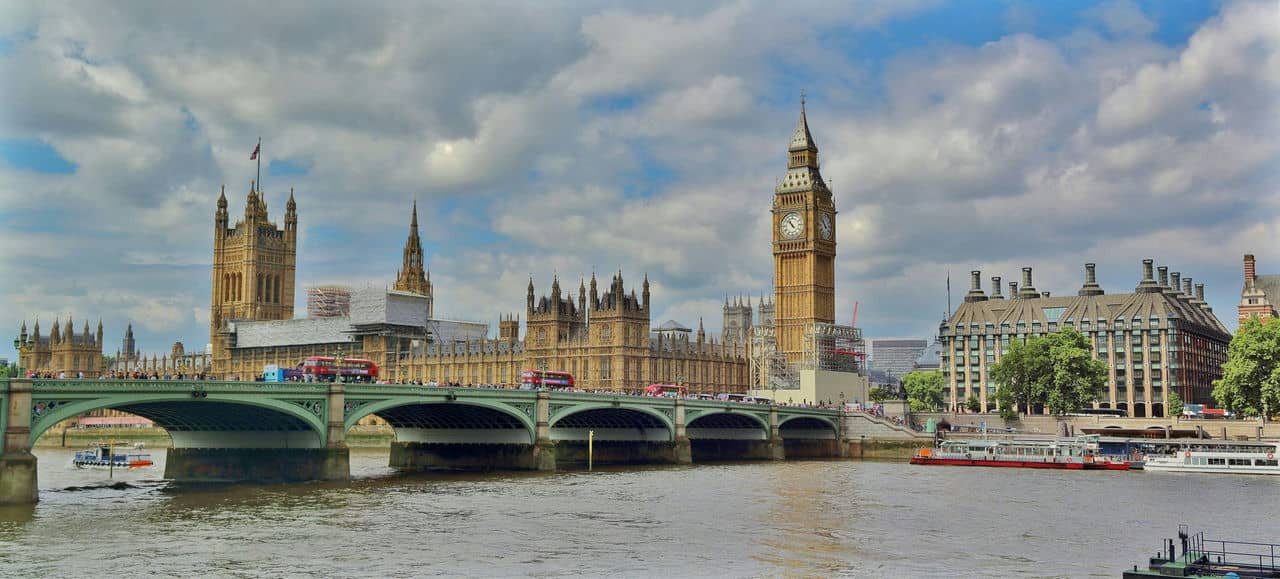
What architectural style is most prominent in Big Ben?
The most prominent architectural style in Big Ben is neo-Gothic. The tower was designed by architects Augustus Pugin and Charles Barry in a style that drew inspiration from the Gothic architecture of the medieval period. Neo-gothic architecture was characterized by pointed arches, intricate ornamentation, and a vertical emphasis, which can be seen in the design elements of Big Ben. The neo-gothic style was prevalent in the 19th century and aimed to revive the architectural traditions of the past. It was often used for important public buildings, such as churches, government structures, and universities. Big Ben, as part of the Palace of Westminster, adopted this architectural style to reflect the grandeur and historical significance of the British Parliament. The neo-gothic features of Big Ben can be observed in its pointed arches, decorative tracery, and elaborate stone carvings. The tower’s intricate detailing and the use of limestone give it a distinct Gothic aesthetic.
What structural engineering principles are employed in the construction of Big Ben?
4 major structural engineering principles were employed in the construction of Big Ben. Firstly, the tower’s foundation was designed to distribute the structure’s weight evenly and provide stability. The foundation rests on a gravel layer, which helps absorb and distribute the load. Concrete foundations were 12 feet (3.7 meters) thick to provide a solid base for the tower. Secondly, the tower’s structural framework was constructed using a combination of bricks and steel. The brickwork formed the exterior walls, while the steel framework provided internal reinforcement. The combination of materials ensured the tower’s strength and structural integrity. Thirdly, the tower features a spiral staircase with stone steps, which allows access to various levels of the structure. The staircase is designed to withstand heavy foot traffic and provide safe passage for visitors. Lastly, during the construction of the Westminster section of the Jubilee line, thousands of tons of concrete were pumped into the ground underneath the tower to stabilize it. It was necessary due to the soft ground in the area. The additional concrete helped mitigate any potential instability caused by the construction activities.
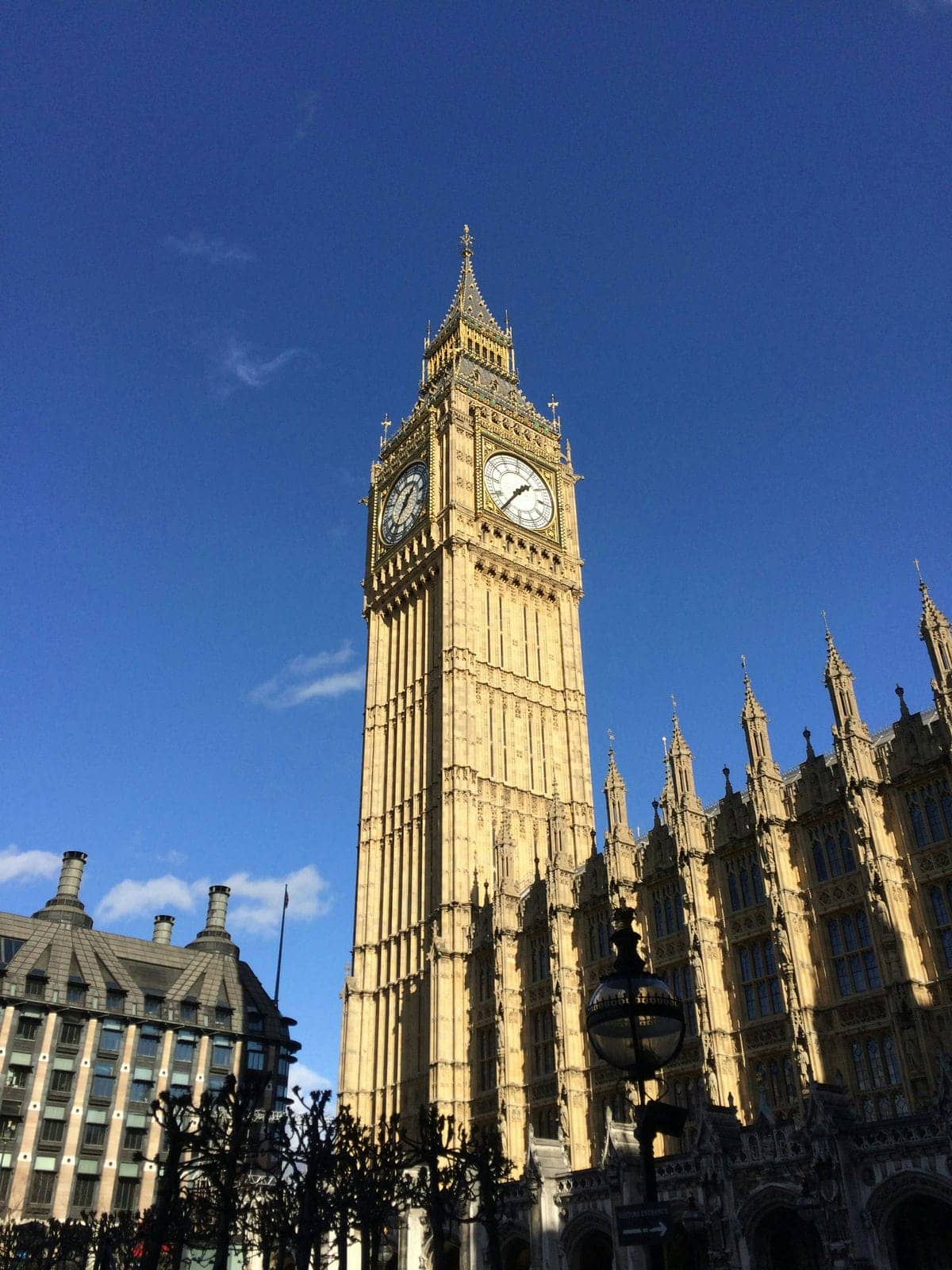
Who designed Big Ben?
Big Ben was designed by architects Augustus Pugin and Charles Barry. Pugin and Barry collaborated on the tower’s design as part of the overall neo-gothic architectural scheme for the Palace of Westminster. Augustus Pugin was an English architect and designer known for his contributions to the Gothic Revival movement. He was responsible for many of the intricate decorative elements and design features of Big Ben. Pugin’s expertise in Gothic architecture and his attention to detail greatly influenced the overall aesthetic of the tower. Charles Barry, another English architect, was the chief architect of the Palace of Westminster. He worked closely with Pugin to bring their shared vision of the clock tower to life. Barry was responsible for the overall design and structural aspects of Big Ben, including its proportions, layout, and integration into the palace complex.
What are the historical design influences visible in Big Ben?
There are 4 major historical design influences visible in Big Ben. Firstly, the tower’s prominent design influence is the Gothic Revival movement. Architects Augustus Pugin and Charles Barry drew inspiration from medieval Gothic architecture, characterized by pointed arches, elaborate tracery, and intricate stone carvings. These features can be seen in the pointed arches and ornamental details of Big Ben. Secondly, the tower incorporates elements of the Victorian architectural style. The Victorian era, named after Queen Victoria, was characterized by various architectural influences. Big Ben reflects the Victorian taste for ornate and decorative designs, visible in the tower’s elaborate stonework and attention to detail. Thirdly, the tower showcases a sense of nationalism and patriotism through its design. It includes symbols related to the four nations of the United Kingdom, such as the national emblems of England, Scotland, Wales, and Ireland. These symbols express the unity of the four nations within the iconic landmark. Lastly, Big Ben’s design also reflects the historical context of the Palace of Westminster, where it is located. The tower’s design harmonizes with the neo-gothic architecture of the palace, which was rebuilt in the mid-19th century. The tower’s overall aesthetic integrates seamlessly with the surrounding buildings, creating a cohesive architectural ensemble.
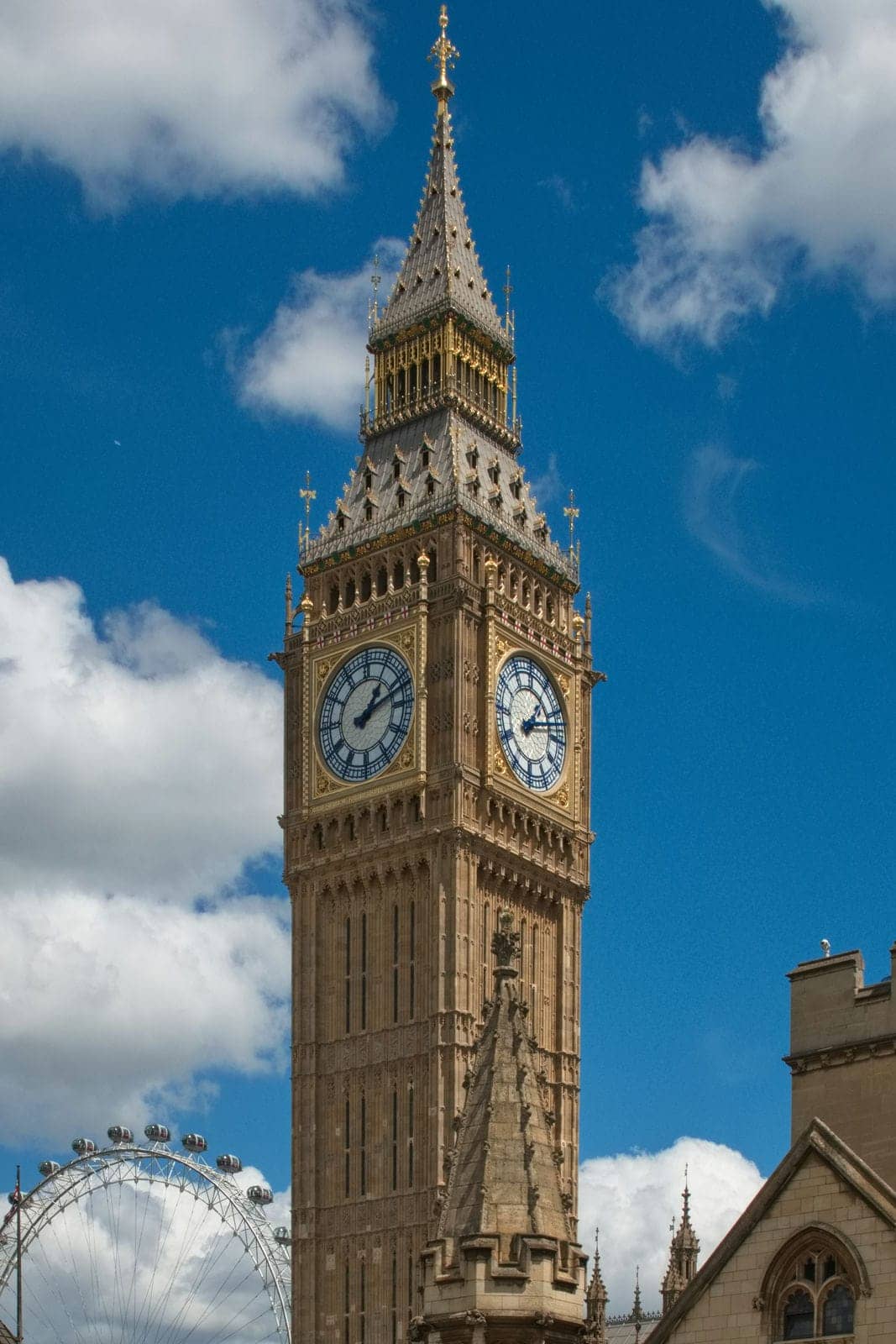
How has Big Ben influenced the design of other buildings in England?
The Big Ben influenced the design of other buildings in England in 4 ways. Firstly, the Gothic Revival style seen in Big Ben has influenced the design of numerous churches and civic buildings across the country. Architects have adopted the pointed arches, intricate tracery, and ornate stonework reminiscent of the tower. These architectural elements can be observed in various structures, contributing to a cohesive visual language and a sense of historical continuity. Secondly, the clock tower’s vertical emphasis and grand scale have influenced the design of tall buildings and landmarks. Architects have drawn inspiration from Big Ben’s imposing presence and incorporated similar vertical elements. It can be seen in the vertical proportions, towering facades, and tall spires of buildings that aim to create a sense of grandeur and prominence. Thirdly, the use of historical symbolism in Big Ben has inspired the incorporation of national motifs in the design of other buildings. The tower’s inclusion of national emblems has influenced the use of symbolic elements that represent the identity and heritage of the country. The symbols are often integrated into buildings’ facades or decorative elements, reinforcing a sense of national pride and cultural significance. Lastly, Big Ben’s overall aesthetic and historical importance have inspired the design of architectural landmarks and monuments. The tower’s iconic status as a symbol of London and the United Kingdom has prompted architects to create structures that evoke a similar sense of identity and heritage. These buildings often incorporate historical references, ornate details, and a strong visual presence, paying homage to the impact and legacy of Big Ben.
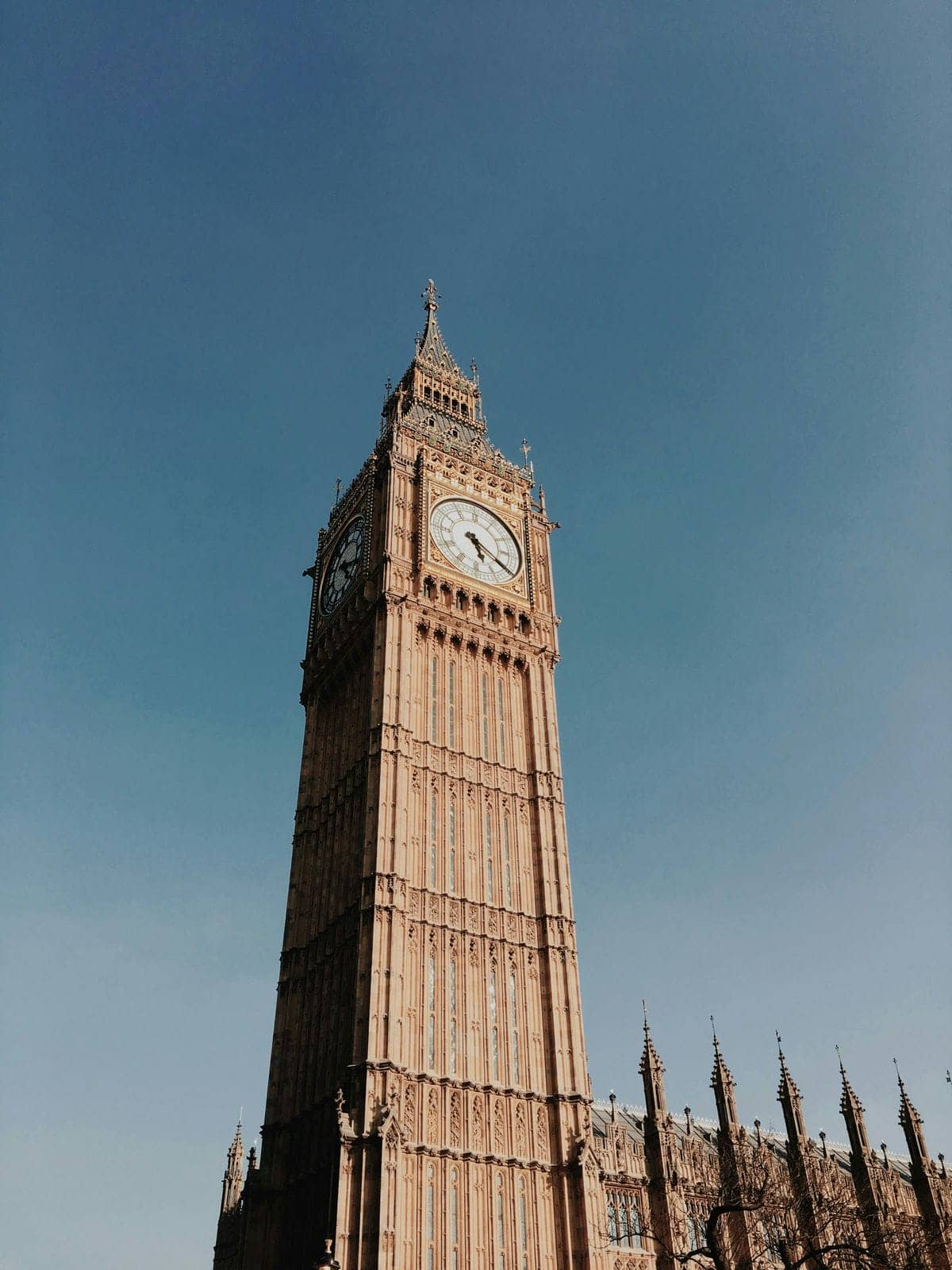
What purpose does Big Ben serve, and how does the design help?
Big Ben is a prominent clock tower and an important symbol of the United Kingdom. Its primary purpose is to provide accurate timekeeping for the city of London. The clock’s chimes and faces serve as a public timekeeping mechanism, allowing people to easily and accurately tell the time. Big Ben’s elevated position and imposing height make it easily visible from various parts of the city. The tower’s prominent location near the Palace of Westminster makes its clock faces visible to many people. The visibility helps individuals in the vicinity and those passing by to check the time, facilitating punctuality and time management. The tower’s design incorporates large clock faces with clear numerals, making it easy for people to read the time even from a distance. The clock faces are illuminated at night, ensuring the time can be read even in low-light conditions. The design of the clock faces, with their black numerals and white background, provides a high contrast for optimal visibility. Big Ben’s iconic clock tower design helps to establish a sense of identity and place. It has become one of the most recognizable landmarks in London and a symbol of the city.
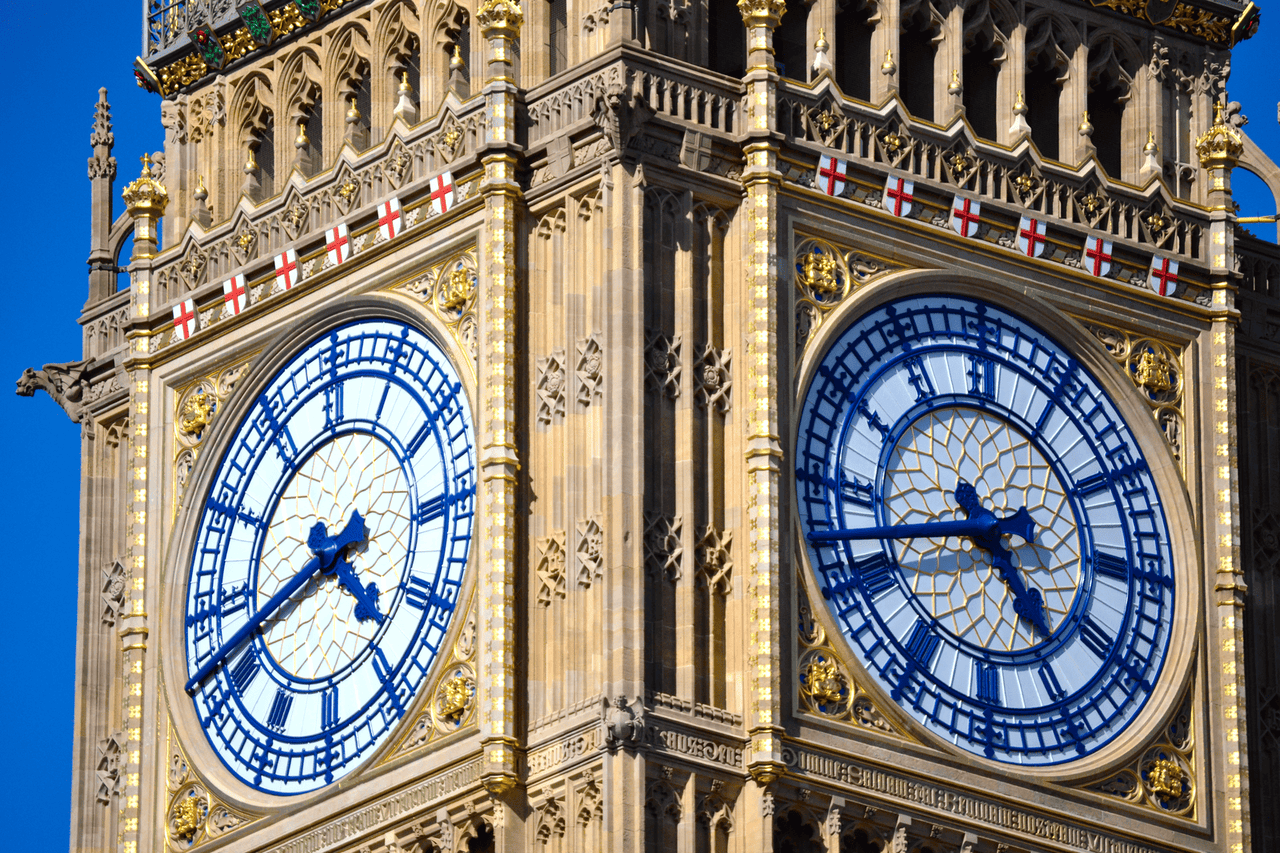
How is Big Ben maintained?
Big Ben is maintained through a comprehensive maintenance program to ensure its structural integrity and the proper functioning of its clock and bells. The maintenance efforts focus on three key aspects: regular inspections, ongoing repairs and restoration, and routine cleaning. Firstly, regular inspections are conducted to assess the tower’s condition and identify potential issues. These inspections involve examining the stonework, clock mechanism, and bells for signs of wear, damage, or malfunction. Trained professionals perform these inspections to ensure any problems are detected early and promptly addressed. Secondly, ongoing repairs and restoration work are carried out to maintain the tower’s structural stability and preserve its historical features, including repairing damaged stonework, reinforcing structural elements, and replacing worn-out components of the clock mechanism. Skilled craftsmen and restoration specialists are involved in these efforts to preserve the tower’s original design and architectural details. Lastly, routine cleaning is performed to keep Big Ben looking its best. The tower is periodically cleaned to remove dirt, pollutants, and accumulated biological growth. The cleaning process involves gentle techniques and specialized equipment to avoid causing any damage to the delicate stonework and decorative elements of the tower.
How does Big Ben reflect cultural and contextual relevance in its design?
The Big Ben reflects cultural and contextual relevance in its design in 4 ways. Firstly, the tower’s design incorporates historical and national symbols that hold cultural significance. The inclusion of national emblems, such as the symbols of England, Scotland, Wales, and Ireland, represents the unity and shared heritage of the United Kingdom. These symbols serve as visual reminders of the country’s historical and cultural diversity, reflecting the nation’s values and identity. Secondly, Big Ben’s design is contextualized within its architectural surroundings. The tower is located within the Palace of Westminster, a neo-Gothic architectural masterpiece. Big Ben’s design harmonizes with the palace’s style, blending seamlessly into the architectural ensemble. The contextual relationship strengthens the tower’s cultural relevance by connecting it to the historical and political significance of the Palace of Westminster. Thirdly, Big Ben symbolizes British identity and heritage. As an iconic landmark, it represents the enduring values, traditions, and history of the United Kingdom. The tower’s neo-Gothic architectural style evokes a sense of national pride, harking back to a time when Gothic architecture flourished in the country. Its grandeur and imposing presence serve as a cultural symbol, reminding people of the nation’s rich past and its contributions to art and architecture. Lastly, its association with significant historical events further enhances the clock tower’s cultural and contextual relevance. Big Ben has witnessed and marked important moments in British history, such as the New Year celebrations and chiming bells to signal the beginning of parliamentary sessions. These events and traditions contribute to the tower’s cultural significance, reinforcing its relevance as a national identity and heritage symbol.
What architectural trend or movement does Big Ben represent?
Big Ben represents the Gothic Revival architectural movement, also known as Victorian Gothic or Neo-Gothic. The architectural trend emerged in the 19th century and sought to revive the elements and aesthetics of medieval Gothic architecture. The design of Big Ben incorporates key characteristics of this movement, including pointed arches, intricate tracery, and ornate stonework. Firstly, the tower’s prominent use of pointed arches is a defining feature of Gothic Revival architecture. Big Ben showcases pointed arches in its windows, doorways, and arcades. The architectural element creates a sense of height and verticality, contributing to the tower’s imposing presence and emphasizing its vertical proportions. Secondly, the intricate tracery present in Big Ben’s design is another hallmark of the Gothic Revival movement. Tracery refers to the ornamental, lacy stone patterns often found in Gothic architecture. The tower exhibits delicate tracery in its windows and decorative elements, adding intricacy and visual interest to the overall design. Lastly, Big Ben’s ornate stonework exemplifies the attention to detail and craftsmanship associated with the Gothic Revival style. The tower features elaborate carvings, decorative motifs, and intricate detailing on its façade. These ornamental elements contribute to the tower’s visual richness and evoke a sense of historical grandeur.
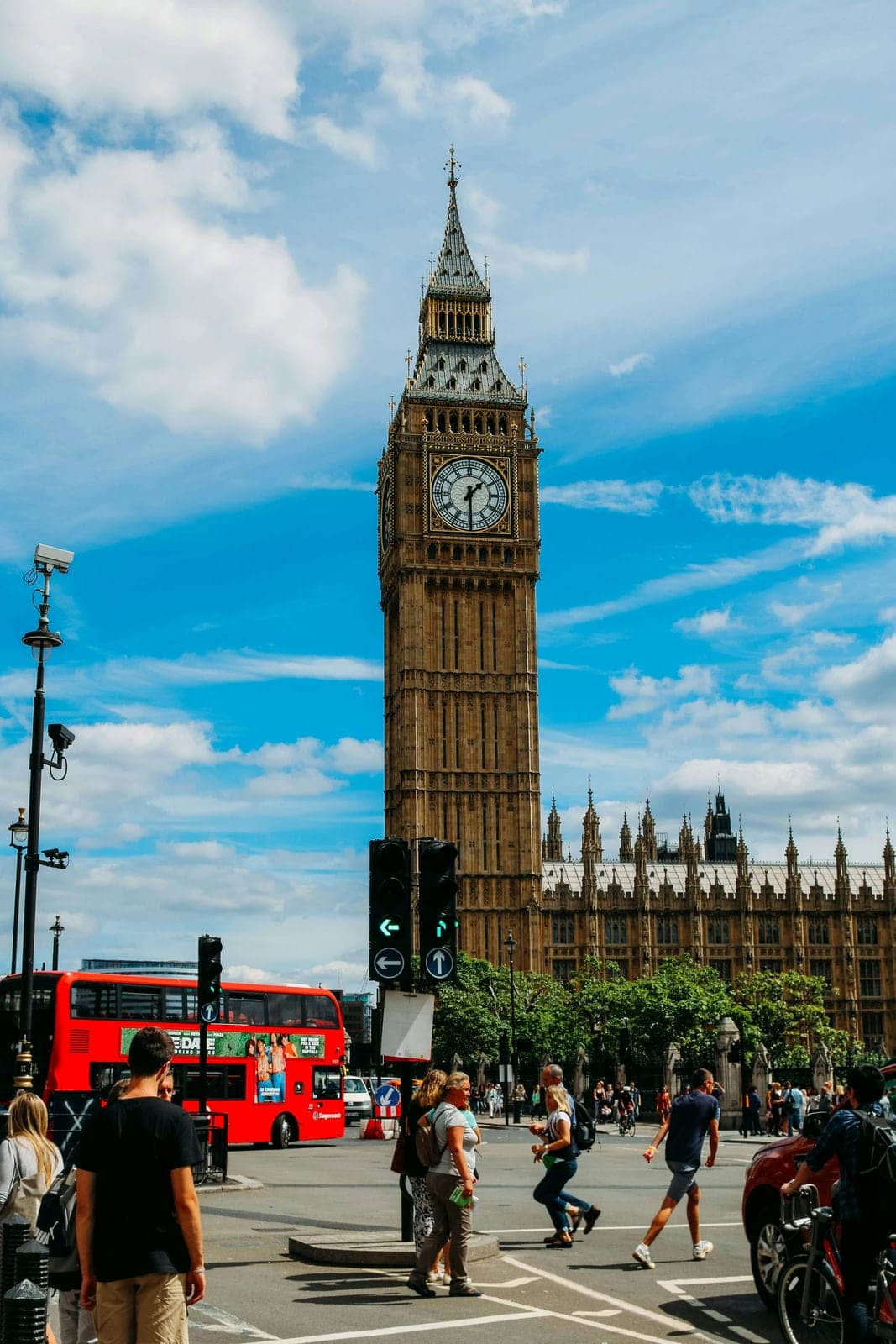
What are the challenges faced during the restoration of Big Ben?
There are 4 major challenges faced during the restoration of the Big Ben. Firstly, the complex nature of Big Ben’s structure posed a challenge during the restoration process. The tower has intricate stonework, delicate carvings, and a clock mechanism that requires precise maintenance. Preserving and repairing these elements required a thorough understanding of the tower’s historical construction techniques and the ability to work with the unique challenges posed by its design. Secondly, the restoration of Big Ben demanded specialized expertise. Skilled craftsmen, restoration specialists, and clock experts were required to undertake the intricate work of repairing and preserving the tower. The restoration team needed a deep understanding of the Gothic Revival architectural style, clock mechanisms, and historical preservation techniques to maintain the tower’s original design and functionality. Thirdly, accessing high altitudes presented logistical challenges during the restoration. Big Ben stands at a considerable height, making it difficult for workers to reach certain areas of the tower. Scaffolding and other access equipment must be carefully planned and installed to facilitate safe and efficient restoration work. The need to work at heights required additional safety measures and precautions to protect the workers and ensure the successful completion of the restoration. Lastly, the restoration of Big Ben required meticulous planning and coordination. The project involved multiple stakeholders, including heritage organizations, architects, engineers, and contractors. Coordinating the efforts of these various parties was crucial to ensure that the restoration adhered to the highest historic preservation standards, structural integrity, and clock functionality. Effective project management and communication were essential to meet the goals and timelines of the restoration project.
How does Big Ben comply with contemporary safety and accessibility standards?
The Big Ben complies with contemporary safety and accessibility standards in 4 ways. Firstly, Big Ben has modern fire safety systems to meet current safety standards. It includes the installation of fire alarms, smoke detectors, fire extinguishers, and emergency lighting throughout the tower. These systems help to detect and mitigate fire hazards, ensuring the safety of both visitors and the structure itself. These systems are regularly maintained and tested to ensure their effectiveness and compliance with safety regulations. Secondly, efforts have been made to improve accessibility features in Big Ben. Accessibility ramps, elevators, and other facilities have been installed to provide easy access for individuals with disabilities or mobility challenges. These adaptations aim to create an inclusive environment, allowing a wider range of visitors to experience and enjoy the iconic landmark. The consideration for accessibility standards ensures that Big Ben can be enjoyed by all members of the public, regardless of their physical abilities. Thirdly, safety protocols have been implemented to ensure the well-being of visitors and workers within Big Ben. Signage, emergency evacuation plans, and security measures are in place to guide people during emergencies and to maintain a safe environment throughout the tower. Regular safety inspections and training are conducted to ensure compliance with regulations and promptly address potential safety risks. Lastly, advanced technology is utilized to monitor and maintain Big Ben’s safety. Surveillance cameras, alarm systems, and remote monitoring tools are employed to detect any issues or abnormalities and to facilitate swift responses. Digital maintenance records and data collection systems monitor the tower’s condition, allowing for proactive maintenance and prompt identification of potential risks or maintenance needs.

Are there any specific tours for architects or architecture enthusiasts to visit Big Ben?
Yes, there are specific tours for architects or architecture enthusiasts to visit Big Ben. These tours provide in-depth insights into the iconic landmark’s architectural significance and historical context, catering to the specific interests and knowledge of professionals and enthusiasts in architecture. These specialized tours offer architects and architecture enthusiasts the opportunity to explore the intricate details and design elements of Big Ben. Visitors can learn about the Gothic Revival architectural style, the construction techniques employed, and the tower’s historical significance. Expert guides provide detailed explanations and discuss the architectural features, allowing participants to deepen their understanding and appreciation of the landmark.
What lessons can architects learn from the design and construction of Big Ben?
There are 4 lessons that architects can learn from the design and construction of the Big Ben. Firstly, the design of Big Ben emphasizes the importance of proportion and scale. Architects can learn from the way the tower’s height, width, and intricate detailing create a harmonious and visually striking composition. Understanding and implementing proportion and scale in their designs can help architects create aesthetically pleasing and visually balanced buildings. Secondly, the construction of Big Ben highlights the significance of structural integrity. Architects can learn from the tower’s robust construction, which has withstood the test of time. Incorporating sound structural principles into their designs ensures the longevity and safety of buildings, allowing them to endure for future generations. Thirdly, the historical preservation of Big Ben serves as a lesson in maintaining the integrity of cultural landmarks. Architects can learn from the careful restoration and preservation efforts undertaken to protect the tower’s historical significance. Architects can contribute to preserving cultural heritage while incorporating contemporary design elements by considering the historical context and employing appropriate restoration techniques. Lastly, the enduring popularity of Big Ben demonstrates the importance of creating iconic landmarks. Architects can learn from the tower’s ability to captivate and inspire people worldwide. Designing buildings with unique and memorable features can contribute to creating landmarks that become symbols of identity and cultural heritage.
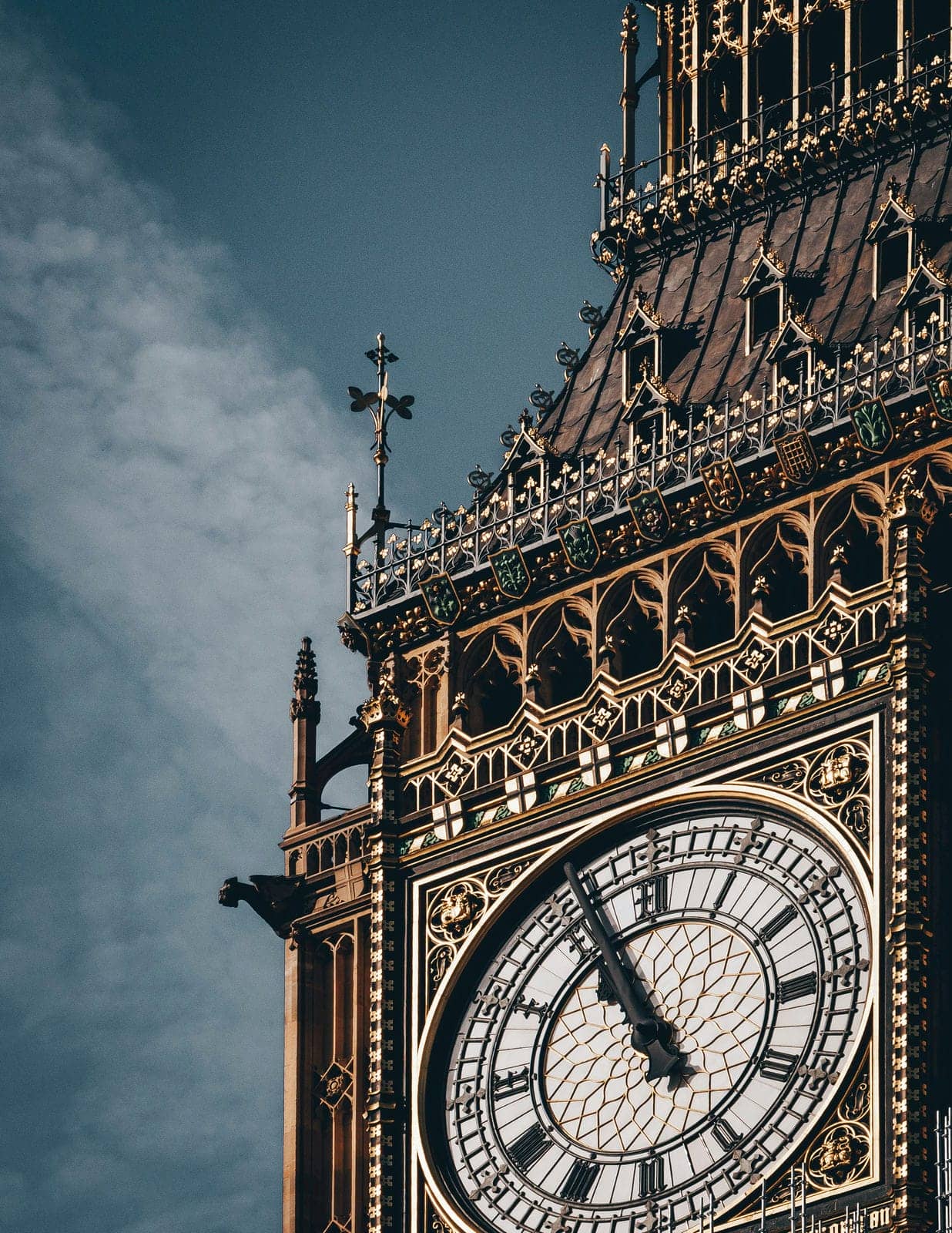
What are the best architectural landmarks to visit as an architect?
Listed below are the best architectural landmarks to visit as an architect:
- Sagrada Familia: The Sagrada Familia is an iconic basilica located in Barcelona, Spain. Designed by popular architect Antoni Gaudí, it is known for its unique and intricate architectural style that combines Gothic and Art Nouveau influences. The basilica has been under construction since 1882 and is still ongoing, making it a fascinating example of long-term architectural vision and dedication. Visitors can admire the stunning facades, soaring towers, and intricate details that make the Sagrada Familia a must-visit landmark for architects and enthusiasts alike.
- Taj Mahal: The Taj Mahal is a UNESCO World Heritage site in Agra, India. Built in the 17th century by Emperor Shah Jahan as a mausoleum for his beloved wife, it is considered one of the most beautiful examples of Mughal architecture. The Taj Mahal features intricate marble inlay work, symmetrical design elements, and a stunning white marble exterior. Its harmonious proportions and elegant details make it a masterpiece of architectural craftsmanship, attracting millions of visitors annually.
- Sydney Opera House: The Sydney Opera House is an iconic performing arts center in Sydney, Australia. Designed by Danish architect Jørn Utzon, it is known for its distinctive sail-like roof structure. The complex houses multiple performance venues and symbolizes modern expressionist architecture. Its innovative design and engineering challenges make it a significant landmark in architectural history. Visitors can take guided tours to explore the interior spaces and learn about the architectural concepts behind this world-famous structure.
- Guggenheim Museum Bilbao: The Guggenheim Museum Bilbao is a contemporary art museum in Bilbao, Spain. Designed by architect Frank Gehry, it is recognized for its striking, curvilinear form and titanium-clad exterior. The museum’s unconventional design pushes the boundaries of traditional architecture, creating a visually captivating and highly acclaimed landmark. Inside, visitors can experience a diverse collection of modern and contemporary art. The Guggenheim Museum Bilbao has revitalized the city, symbolizing urban regeneration through architecture.
- Fallingwater: Fallingwater is a residential house located in Mill Run, Pennsylvania. Designed by architect Frank Lloyd Wright, it is an iconic example of organic architecture that integrates seamlessly with its natural surroundings. The house is built over a waterfall and features cantilevered balconies and open spaces that blur the boundaries between indoors and outdoors. Fallingwater showcases Wright’s principles of harmony between architecture and nature, making it a significant landmark for architects interested in sustainable design.
- St. Peter’s Basilica: St. Peter’s Basilica is a major basilica in Vatican City, Rome. Designed by known architects, including Michelangelo and Gian Lorenzo Bernini, it is the largest church in the world and a masterpiece of Renaissance and Baroque architecture. The basilica’s grandeur is evident in its vast dome, intricate mosaics, and numerous works of art. Architects can appreciate the meticulous detailing and craftsmanship that went into creating this architectural marvel. Visitors can explore the interior, including the famous St. Peter’s Square, and marvel at its architectural and artistic splendor.
- The Louvre: The Louvre is a world-known art museum in Paris, France. Originally a medieval fortress, it was transformed into a grand palace and later became a museum. The Louvre is celebrated for its iconic glass pyramid entrance, designed by architect I.M. Pei. The museum houses an extensive collection of art and historical artifacts, including famous works such as the Mona Lisa. Architects can appreciate the museum’s architectural evolution, from its historical roots to the modern additions that have transformed it into a cultural landmark.
- Burj Khalifa: The Burj Khalifa is a skyscraper in Dubai, United Arab Emirates. Designed by the architectural firm Skidmore, Owings & Merrill, it is the tallest building in the world, standing at 2,717 feet (828 meters). The Burj Khalifa’s sleek and futuristic design features a stepped silhouette and a reflective glass facade. Its engineering marvels, such as the advanced structural systems and high-speed elevators, make it an impressive landmark for architects interested in tall building design. Visitors can enjoy panoramic views of Dubai from the observation decks on the upper floors.
- The Parthenon: The Parthenon is an ancient temple atop the Acropolis hill in Athens, Greece. Built in the 5th century BCE, it symbolizes classical Greek architecture and is one of the most influential buildings in Western history. The Parthenon showcases the Doric order with its iconic columns and pediments adorned with marble sculptures. Its harmonious proportions and refined architectural details demonstrate the principles of balance and symmetry. Architects can study the Parthenon’s design to understand the foundations of classical architecture and its enduring impact on architectural aesthetics.
- The Great Wall of China: The Great Wall of China is an ancient fortification that stretches across northern China. It is an architectural marvel and a UNESCO World Heritage site built over centuries. The wall showcases various construction techniques, including brick, stone, and rammed earth. Its strategic design incorporates watchtowers, battlements, and defensive features. The Great Wall’s vast scale and historical significance make it a remarkable landmark for architects interested in the intersection of architecture and military engineering. Visitors can explore different sections of the wall and admire the panoramic views of the surrounding landscapes.


